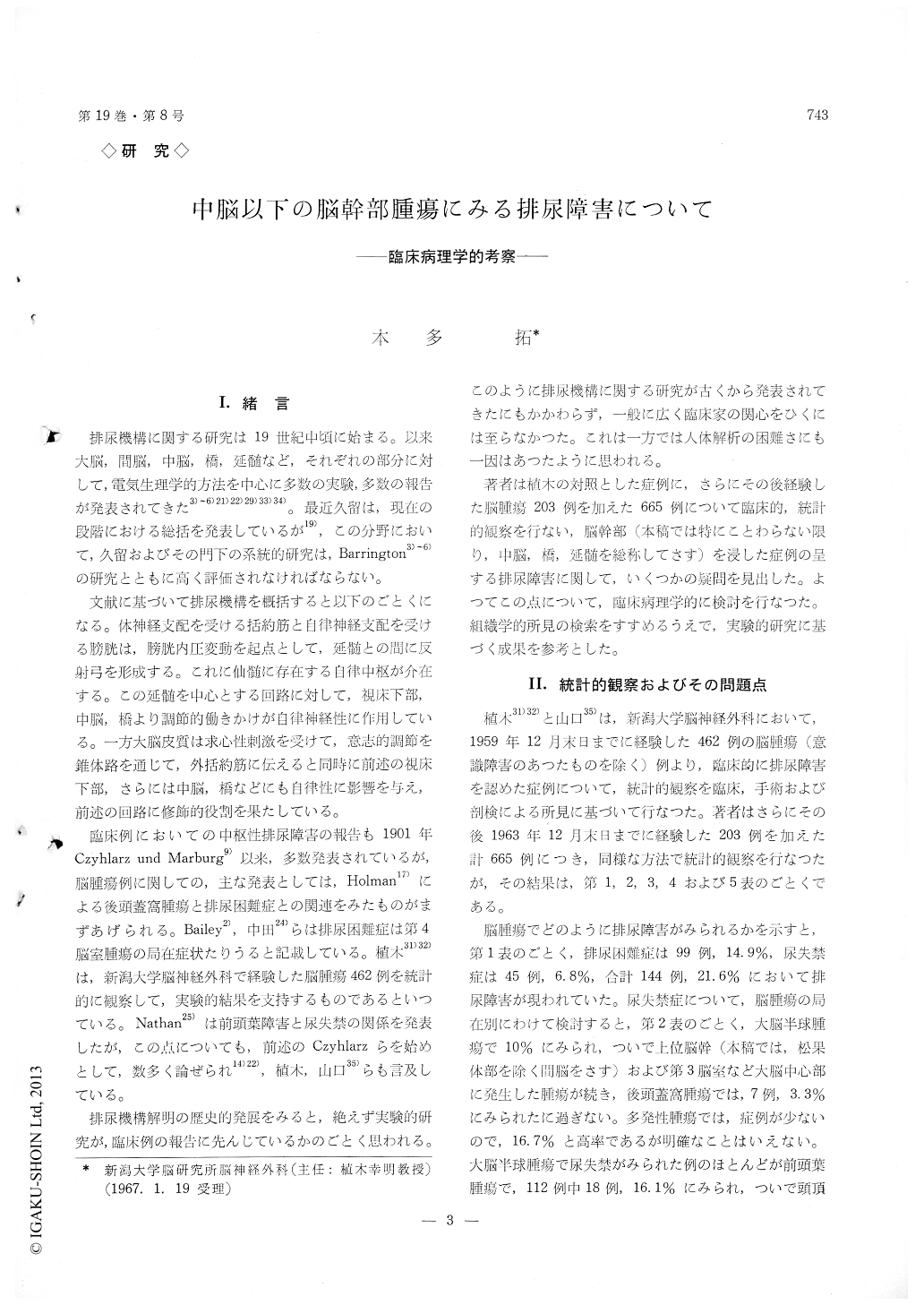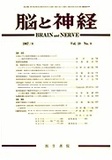Japanese
English
- 有料閲覧
- Abstract 文献概要
- 1ページ目 Look Inside
I.緒言
排尿機構に関する研究は19世紀中頃に始まる。以来大脳,間脳,中脳,橋,延髄など,それぞれの部分に対して,電気生理学的方法を中心に多数の実験,多数の報告が発表されてきた3)〜6)21)22)29)33)34)。最近久留は,現在の段階における総括を発表しているが19),この分野において,久留およびその門下の系統的研究は,Barrington3)〜6)の研究とともに高く評価されなければならない。
文献に基づいて排尿機構を概括すると以下のごとくになる。体神経支配を受ける括約筋と自律神経支配を受ける膀胱は,膀胱内圧変動を起点として,延髄との間に反射弓を形成する。これに仙髄に存在する自律中枢が介在する。この延髄を中心とする回路に対して,視床下部,中脳,橋より調節的働きかけが自律神経性に作用している。一方大脳皮質は求心性刺激を受けて,意志的調節を錐体路を通じて,外括約筋に伝えると同時に前述の視床下部,さらには中脳,橋などにも自律性に影響を与え,前述の回路に修飾的役割を果たしている。
The mechanism of the central regulation of urina-tion has been studied for long time in the human of experimental subjects, but various problems has beenremaining unsolved, especially in the human subjects.
45 cases or 6.8% of urinary incontinence and 99 cases or 14.9% of difficult urination were noted on statistical observation of 665 patients in our clinic with clinical diagnosis of brain tumor.
The difficult urination was more frequently associ-ated with the pontine and IVth ventricular tumors, and less frequently associated with cerebellar ones. In some cases difficulty in urination was not encountered at all, even in the pontine tumors. The frequent mic-turition was mostly associated with cerebral hemisphere tumors, and rarely associated with posterior fossa tumors.
The symptom of difficult urination was transient and was improved by removal of the tumor or irra-diation therapy in many cases.
52 cases of brain tumors involving the lower brain stem were histologically examined in serial sectioning. Pathological abnormality were found in the teg-mentum of the upper pons in all cases of difficult urination but was found in few cases of brain tumor in which urination was normal. Of the lesions of the tegmentum of the upper pons, the locus caeruleus and adjacent brain tissue were more frequently involved than other nuclei or regions of the pons. The locus caeruleus and adjacent brain tissues were, more or less, entangled with some non-neoplastic pathological changes such as neuronal degeneration or marked accumulation of unusual intracytoplasmic granules in all cases of difficult urination, except for one case with direct tumor involvement. The results also suggested that the dysfunction of the locus caeruleus which pro-bably caused difficult urination could be brought about mostly by secondary influences of neoplasm: edema, circulatory disturbance or intracranial hypertension rather than the the direct tumor invasions.
From above-mentioned consideration, symptome of difficult urination could probably be explained.
In the examination of the medulla oblongata there was almost no difference in location of the pathologi-cal lesion between the cases of difficult urination and those of normal urination.
The urinary incontinence was observed in only three cases, in which the common lesion was revealed in the ventral part of the pontine reticular formation.

Copyright © 1967, Igaku-Shoin Ltd. All rights reserved.


